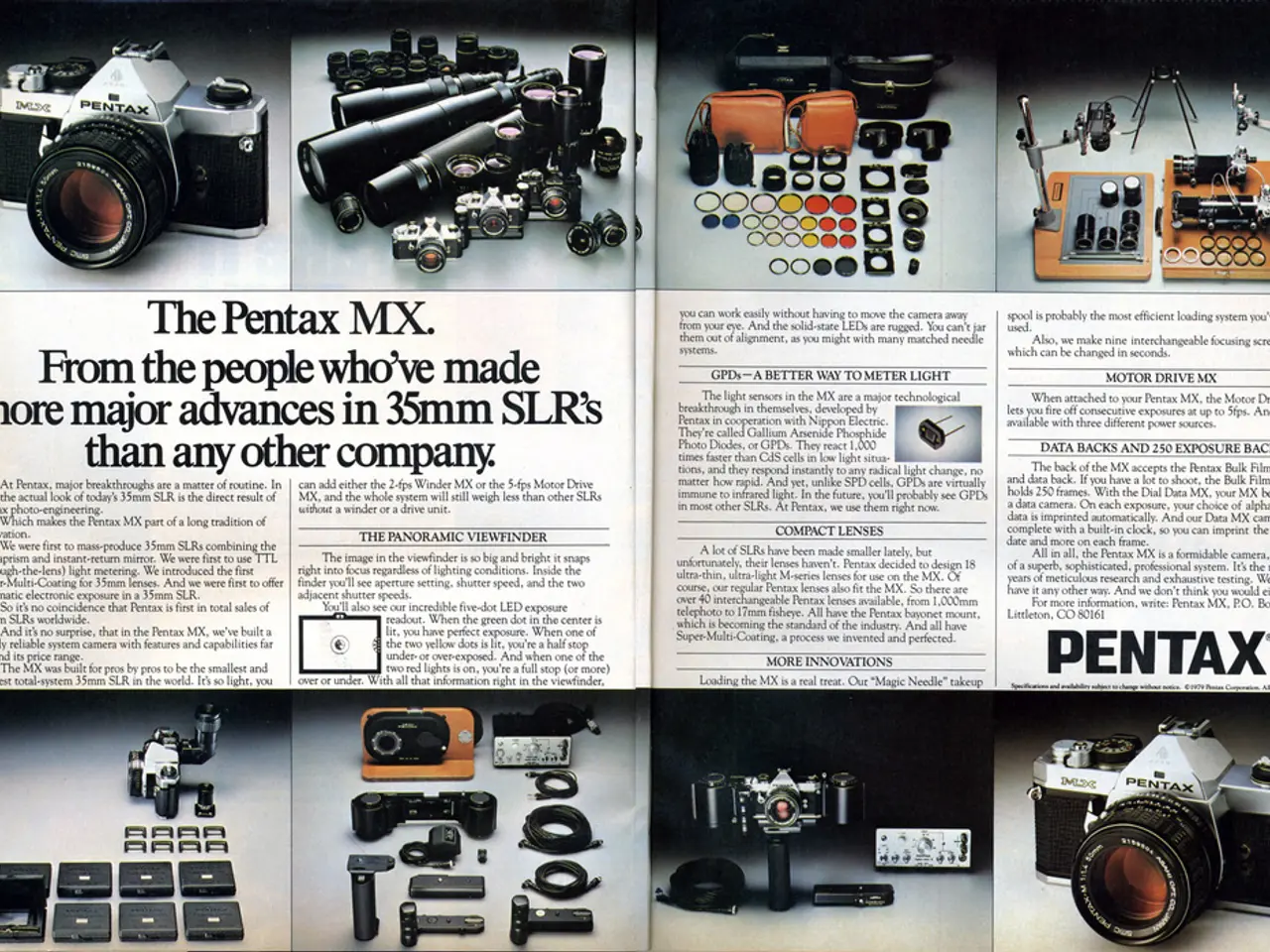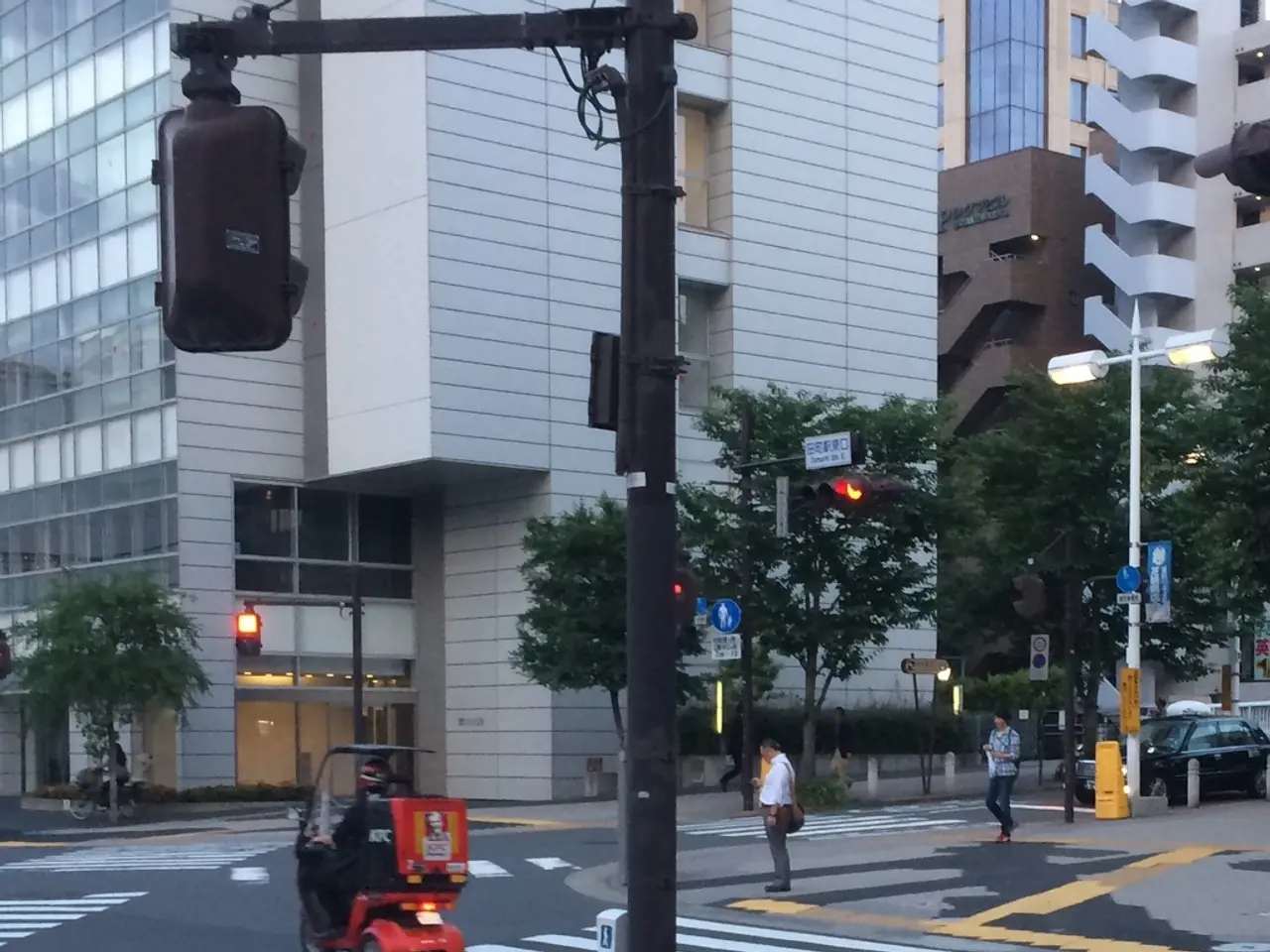Ricoh Mirai purchased: Remarkable bridge camera with eccentric characteristics, reminiscent of Batman's equipment.
In the late 1980s, Ricoh introduced the Ricoh Mirai, a groundbreaking bridge camera that aimed to bridge the gap between early autofocus SLR film cameras and compact models. The Mirai was one of the first bridge cameras, offering a built-in zoom lens and SLR-style handling.
The Mirai boasted a unique design, featuring a chunky handle that also functioned as the battery compartment. It sported a zoom lens with a focal length range of 35-135mm at an aperture of f/4.2-5.5. An optional teleconverter was available, extending the optical reach to 200mm. The camera's eye-level optical viewfinder displayed settings like shutter speed and aperture, providing a familiar SLR experience.
Despite its innovative features, the Mirai's autofocus was relatively slow compared to modern AF technology. Manual focus might have been faster in some cases. The camera operated in a program exposure mode but lacked aperture priority control, limiting creative exposure options.
Ricoh reportedly spent four years and approximately ¥2 billion (~$16 million) on the development of the Mirai, reflecting high expectations for this "futuristic" camera. The Mirai embodied early bridge camera concepts but had limitations typical of late 1980s technology.
Contemporary bridge cameras of that era, including the Ricoh Mirai, were equipped with autofocus systems using near-infrared beams, built-in flashes with automatic firing and red-eye reduction, and motorized film advance with drop-in loading. The Mirai's particular focus was to provide a more SLR-like experience with a simpler zoom mechanism and comprehensive exposure metering systems.
The Ricoh Mirai made a significant appearance in the 1989 Batman movie directed by Tim Burton. The camera was even offered on eBay for under $25 / £20, complete with an optional flashgun.
Chris George, a renowned photographer and technology writer, has been a fan of the Mirai. With a career spanning over 30 years, George has edited numerous magazines such as PhotoPlus, N-Photo, Digital Camera, Video Camera, and Professional Photography. He has also written a number of books, including "The Book of Digital Photography." In recent years, George has been using a Sony A7 IV, alongside his old Nikon D800 and his iPhone 15 Pro Max.
In summary, the Ricoh Mirai was a pioneering bridge camera from the late 1980s, combining SLR-style handling and an all-in-one zoom lens. It was designed as a futuristic, user-friendly alternative bridging compact and SLR cameras, though its autofocus speed and exposure flexibility were limited by the technology of its time.
- The Ricoh Mirai, a trailblazing bridge camera from the late 1980s, aimed to bridge the gap between early autofocus SLR film cameras and compact models.
- The Mirai's unique design featured a chunky handle that also served as the battery compartment, and it boasted a built-in zoom lens with anSLR-style handling.
- The camera's eye-level optical viewfinder displayed settings like shutter speed, aperture, and ISO, providing a familiar SLR experience.
- Despite its innovative features, the Mirai's autofocus was relatively slow compared to modern AF technology, and manual focus might have been faster in some cases.
- The camera operated in a program exposure mode but lacked aperture priority control, limiting creative exposure options.
- Contemporary bridge cameras of that era, including the Ricoh Mirai, were equipped with features like autofocus systems using near-infrared beams, built-in flashes, and motorized film advance with drop-in loading.
- The Mirai, particularly focused on providing a more SLR-like experience with a simpler zoom mechanism and comprehensive exposure metering systems, made a significant appearance in the 1989 Batman movie.
- Renowned photographer and technology writer Chris George, with a career spanning over 30 years, has been a fan of the Mirai. He has praised its design and cutting-edge technology in his many reviews and articles, published in magazines like PhotoPlus, Video Camera, and Professional Photography.




